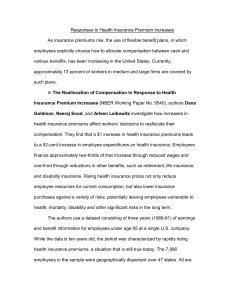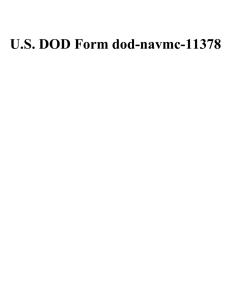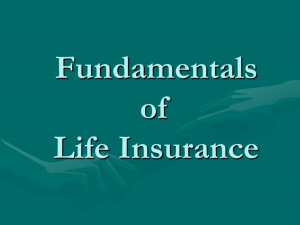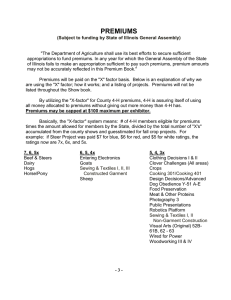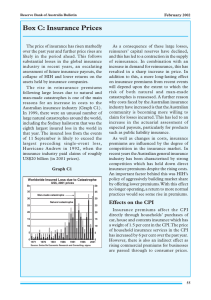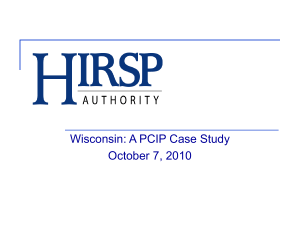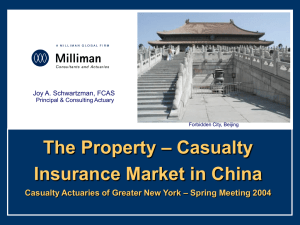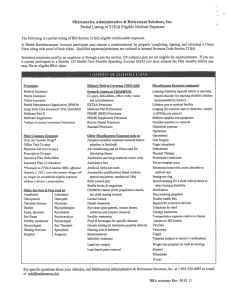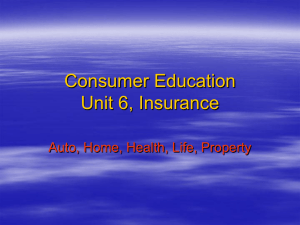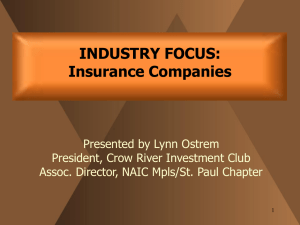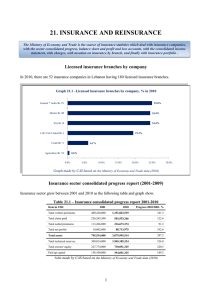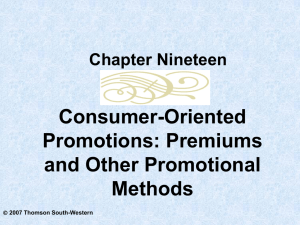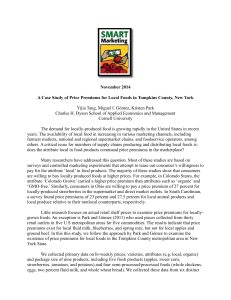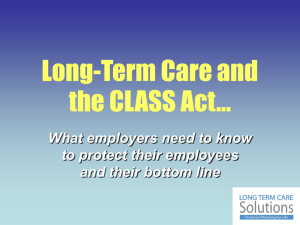Lecture 3: Insurance
advertisement
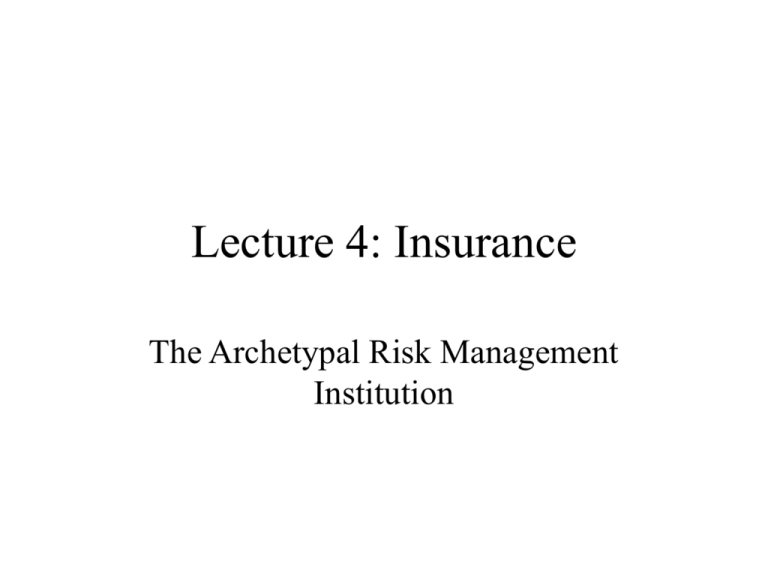
Lecture 4: Insurance The Archetypal Risk Management Institution Fundamental Insurance Principles and Issues • Risk Pooling is the source of all value in insurance • Moral Hazard dealt with partially by deductions and co-insurance • Selection bias dealt with by group policies, by testing and referrals, and by mandatory government insurance Risk Pooling • If n policies, each has independent probability p of a claim, then the number of claims follows the binomial distribution. The standard deviation of the fraction of policies that result in a claim is p(1 p) / n • Law of large numbers: as n gets large, standard deviation approaches zero. Aristotle on Probability • “To succeed in many things, or many times, is difficult; for instance, to repeat the same throw ten thousand times with the dice would be impossible, whereas to make it once or twice is comparatively easy.” (De Caelo) Earliest Known Description of Insurance Idea Anonymous letter to Count Oldenberg, 1609, proposes that people pay 1% of value of home into a fund, to be used to replace house after fire. Writer says he(she) “had no doubt that it would be fully proved, if a calculation were made of the number of houses consumed by fire, within a certain space, in the course of thirty years, that the loss would not amount, by a good deal, to the sum that would be collected in that time. Insurance as an Invention • Contract design, specifying risks, excluding risks subject to moral hazard or selection bias. • Definition of loss and sufficient proof of loss • Mathematical model of risk pooling • Collection of statistics on risks, and evaluation of the quality of such statistics. • Corporate or mutual form for the company • Government verification of insurance company’s ability to pay • Government regulation of insurance Invention of Insurance • In ancient Rome, burial societies and bottomry. (Burial insurance still a factor in less developed countries.) • Actuarial science developed in late 1600s • Modern fire insurance began in London, insurance gradually spread around the world. Commercial Insurance • Property & Casualty Insurance, In US premiums paid 1997 $276 billion, $2760 per household • Private Health Insurance: premiums paid 1996 $137 billion, $1370 per household • Life insurance: In US, premiums paid 1997 $112 billion, or $1120 per household, 373 million policies, with value of $13.2 trillion in US in 1997, $132,000 per household. 1620 US life insurance companies. Property & Casualty Insurance Premiums, US 1997 • • • • • • Automobile $132 billion Homeowners $27 billion Other liability $25 billion Worker’s Compensation $24 billion Commercial multiple peril $19 billion Other categories Origins of Insurance Demand • Slow growth from 1660s of insurance industry • Regulation • Mortgage institutions • Public Education Marketing of Insurance • Mutual Life Insurance of New York in 1840s: Morris Robinson trains highly-paid life insurance salesmen • Equitable Life Insurance Association in late 1800s: Henry B. Hyde invents tontine life insurance policy, sweeps the nation • Whole life is successor to tontine Types of Life Insurance I • Term insurance: level term and annual renewable term (premium increases) • Whole life: guaranteed cash value builds according to schedule (nonparticipating) or with investment upside (participating). Government subsidy: income on cash value is not taxed • Variable life: no guaranteed cash value, policy holder shifts investments among accounts Types of Life Insurance II • Universal Life: like whole life but also gives policyholder flexibility over premiums, unbundles cash value and insurance. Can increase or decrease premiums as needs change • Variable universal life • Survivorship (second to die) insurance • Why the multiple forms? Marketing issues US Government Regulation of Insurance • McCarran Ferguson Act 1945 delegated insurance regulation to the states. Fifty different state regulators. • National Association of Insurance Commissioners (NAIC) creates standardized suggested laws. • In 1993 the NAIC adopted risk-based capital requirements. • Gramm-Leach-Bliley Financial Modernization Act of 1999 allowed banks to affiliate with insurance companies Capital Requirements • Insurance companies risk being unable to pay if there are too many claims. • Why don’t insurance companies define their contracts so that they cannot fail to pay? • Human factors engineering of financial contracts. Surplus and Reserves • Statutory Surplus: Amount beyond reserves that an insurance company has invested • Reserves: An accounting entry, amount they are thought to need to pay the claims. Failures of Insurance Industry • Whole life used to be stressed over term life insurance. (universal life alternative) • Benefits not indexed to inflation • Life annuities not indexed to inflation • Human factors behind these failures


